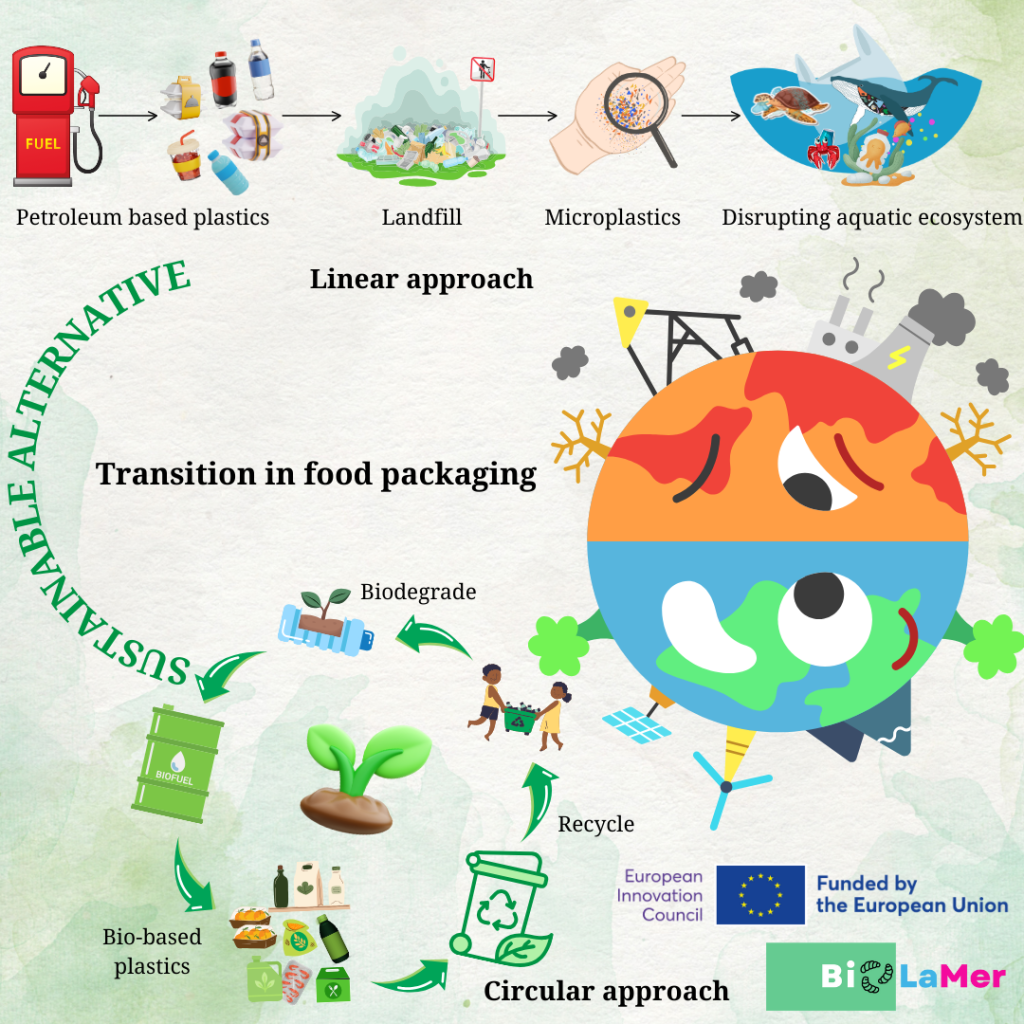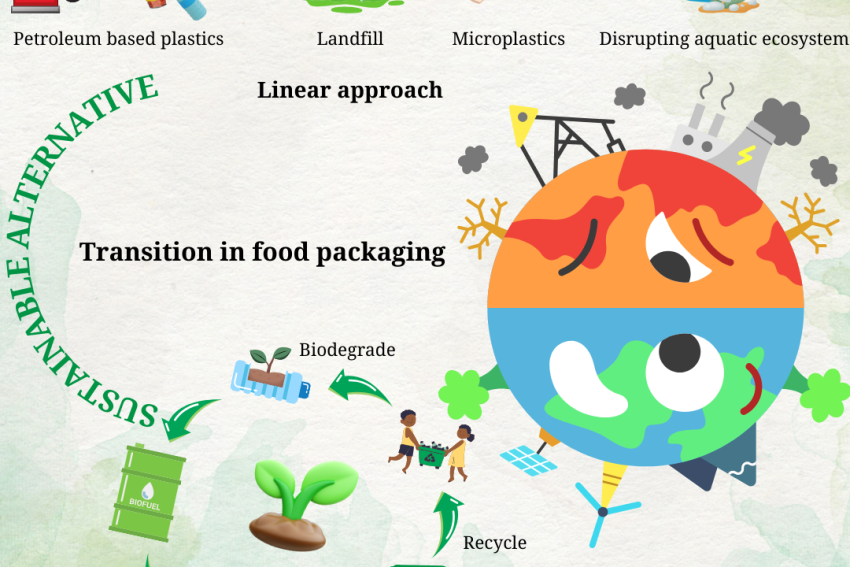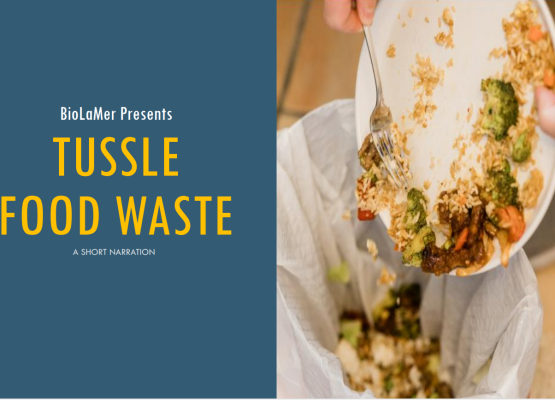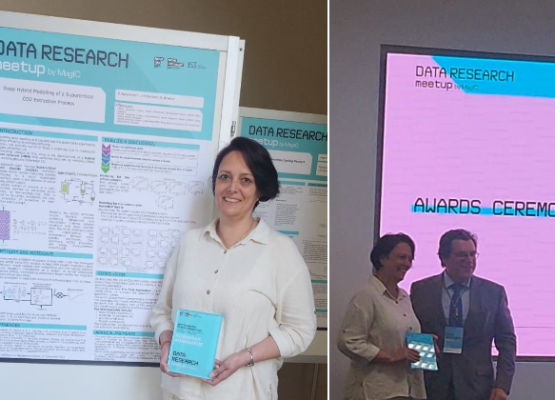It’s an undeniable fact that the food packaging industry relies heavily on plastic packaging to protect and preserve perishable goods. They ensure that the food remain fresh from the time they leave production facilities to when they reach consumers. Conventional plastics provide an effective barrier against contaminants and extend the shelf-life of products by its durability and impermeability, reducing food waste significantly. However, the widespread use of single-use plastics, such as meat and poultry packaging, takeaway containers, cups, and straws have become a double-edged sword.
According to the United Nations report, approximately 36% of global plastic production is dedicated to packaging, particularly single-use items like food and beverage containers. Of these, about 85% eventually make their way to landfills or as unmanaged waste. In addition, marine litter poses a serious threat to all marine ecosystem. Despite ongoing mitigation efforts, an estimated 75 to 199 million tonnes of plastic currently pollute our oceans. This underscores the urgent need for eco-friendly alternatives to conventional plastics.

Bioplastics are emerging as a sustainable alternative, offering the promise of reducing the environmental footprint of the food packaging sector. Unlike traditional plastics derived from fossil fuels, bioplastics are often made from renewable biological sources like corn starch, sugarcane, and even algae. They offer comparable or even superior mechanical properties, such as tensile strength and rigidity, making them suitable for various packaging applications. With their moderate barrier qualities, bioplastics can help preserve the freshness of perishable goods, reducing food waste and supporting global sustainability goals.
By shifting to bioplastics, the industry could significantly lower greenhouse gas emissions associated with plastic production. The packaging market, which constitutes around 43% of bioplastic usage, has seen rapid growth, driven by consumer demand for greener products. According to European Bioplastics, the production capacity of bioplastics is expected to soar, reaching 7.43 million tons by 2028. With this growth trajectory, bioplastics could transform the packaging landscape by providing materials that are not only recyclable but also biodegradable under the right conditions, easing the burden of waste on our planet.
Understanding Bioplastics:
Bioplastics are the polymers produced from natural or renewable resources, which can be bio-based or biodegradable or both.
The term ‘Bioplastics’ often leads to confusion, even among industry professionals, as it encompasses both bio-based and biodegradable plastics:
- Bio-based plastics refers to the polymers derived wholly or partially from renewable biomass. The examples of this type include, bio-based Polyethylene (PE) and bio-based Polyethylene terephthalate (PET).
- Biodegradable plastics refers to the materials that can naturally decompose through the action of microorganisms under specific conditions with examples including Polycaprolactone (PCL) and Polybutylene Adipate Terephthalate (PBAT)
- Bio-based and Biodegradable plastics refers to the polymers that are both sourced from renewable resources and capable of natural degradation. Examples include Polylactic acid (PLA) and Polyhydroxyalkanoates (PHAs).
It is important to note that not all bio-based plastics are biodegradable, and not all biodegradable plastics are bio-based. Proper material selection based on their needs is crucial for minimizing environmental footprint in packaging applications.
Challenges and Potential solutions:
One of the common misconceptions about bioplastics is that they are fully biodegradable in natural environments, which is not universally true. Materials such as PLA (polylactic acid), require specific industrial composting conditions for effective degradation. When improperly disposed of, these materials can still contribute to environmental pollution. Additionally, the cost of producing bioplastics remains higher than that of traditional plastics, making it difficult for them to compete in a market that prioritizes cost-efficiency. The infrastructure for proper collection, recycling, and composting of bioplastics is also lacking in many parts of the world, complicating the transition towards a circular economy.
Addressing these challenges requires educating consumers and improving labeling practices to ensure bioplastics are correctly disposed of, helping to maximize their environmental benefits. This shift in consumer behaviour presents an opportunity for food companies to adopt bioplastics, potentially boosting sales and enhancing brand reputation. With continuous innovations, regulatory support and consumer awareness, bioplastics have the potential to drive the packaging industry towards a more sustainable and circular future.



